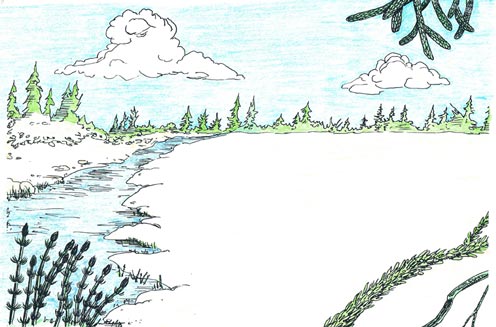New Jersey Mine Could Provide Vital Evidence Regarding Dinosaur Extinction
New Jersey Mine Could Show Exact Moment of Cretaceous Mass Extinction Event
A team of researchers are busily exploring a fifteen-metre-deep hole in New Jersey in a bid to find the exact moment when the Mesozoic ended and the Cenozoic began. The site, part of a greensand mine is one of the last locations on the eastern seaboard of the United States where Cretaceous strata can be studied, The scientists are in a race against time as the site is due to be developed and to disappear under concrete as new houses are built.
The Mesozoic
Palaeontologist Kenneth Lacovara is one of the research team members looking deep into the mine with a view to pinpointing for the exact moment, 66 million years ago, when all dinosaurs, marine reptiles and Pterosaurs perished. That secret could be harder to uncover if the fossil material at this location can no longer be unearthed after a housing and retail development is built on this open cast pit.
Lacovara, an associate professor of biology at Drexel University in Philadelphia, looks at this 40-foot plus deep hole at the end of a dirt road and sees a line in the sand where the Cretaceous period ends. Below that line are dinosaurs, above it, not a single fossil bone belonging to a dinosaur can be found.
He thinks that the creatures his team has been uncovering here all died en masse when an extra-terrestrial body struck the Earth and changed the course of the history of life on our planet. If his theory proves correct, it would be the only burial ground of its kind and provide scientists with a living laboratory to study how the dinosaurs and their cousins the marine reptiles and pterosaurs became extinct.
New Jersey as a state has a special place in the hearts of American palaeontologists. The first nearly complete dinosaur skeleton ever discovered was a Hadrosaurus (H foulkii) found in Haddonfield (New Jersey) in 1858. This dinosaur was named and described by the famous American anatomist Joseph Leidy. But over the years, the numerous silt mines that made for great dinosaur digging were replaced with housing developments and shopping malls.
Today, this site in a southwestern corner of the state is the only remaining mine for greensand, a silt used for fertiliser and water softener. It’s also the only access to the Late Cretaceous Period on the entire eastern seaboard of the United States.
Commenting on the importance of this fossil location Lacovara stated:
“This site is the last existing window into the ancient Cretaceous period in the eastern half of the United States. It’s extraordinary.”
But the township of Mantua, a community of 15,000 people, has other plans for the site. Township officials would like to see the mine closed and a retail and lower cost housing development built in its place. A developer has drawn up plans that include shops and affordable housing. The fate of this location will be decided at a municipal meeting scheduled for July 15th
Inversand, the mine’s owner, has been operating the site since 1926, digging greensand. For years, the company has had a close relationship with palaeontologists, alerting them when they came across large fossils.
Inversand President Alan Davies commented:
“If we find something beyond the routine shark tooth or clam, we call them up.”
The biggest find he recalls happened in the 1960s, when workers came across the skull of a Mosasaurus, a giant marine reptile, that now resides at the New Jersey State Museum in Trenton. Mining for greensand is no longer economically viable for Inversand and the company would like to end operations. If the mine were to shut down and the pump that continuously clears groundwater out of the area were to turn off, the hole would completely fill with water in a matter of weeks, transforming it into a lake. Davis says the mine could shut within three years.
Only a Few Locations in the World Have the Geology to Highlight the End of the Mesozoic
Picture credit: Everything Dinosaur
Facing a looming deadline, Lacovara and his team have stepped up their efforts to dig, applying for grants and enlisting students and amateur palaeontologists to shovel the grey, muddy sand for pieces of natural history.
The scientists worry that without this pit, they’ll lose a historic treasure trove. We at Everything Dinosaur, hope that a solution can be found and at least some part of the site can be kept as open access to palaeontologists to allow them to continue their studies.
For models and replicas of North American, Late Cretaeous dinosaurs and other prehistoric animals: Wild Safari Prehistoric World Figures.


